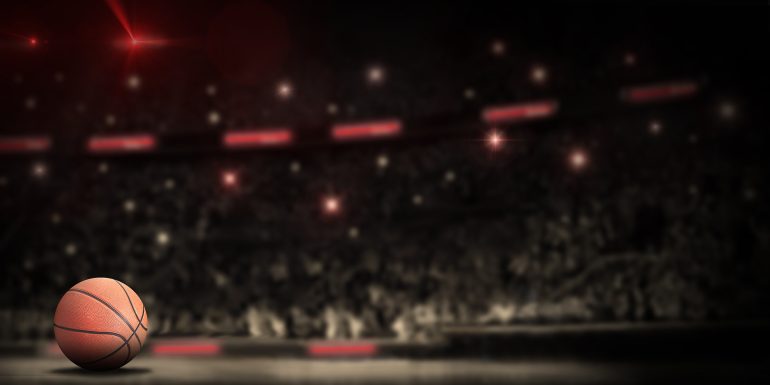- Recent NBA broadcasts have showcased real-time AI calculations indicating player distance from the hoop during three-point shots.
- Inaccuracies in AI-based motion-capture technology highlight its limitations, despite its potential for enhancing decision-making processes in sports.
- Major sports leagues like the NBA, MLB, ATP, and European soccer leagues are exploring AI-based technology to improve officiating and fan engagement.
- Challenges include processing delays and inaccuracies caused by visual distractions on the playing field.
- Human intervention is often necessary to verify AI-generated calls, but it introduces its own set of challenges, such as subjectivity and potential errors.
- While AI holds promise in revolutionizing sports officiating, its integration must be approached cautiously, recognizing both its capabilities and limitations.
Main AI News:
Recent developments in basketball broadcasting have unveiled the potential of artificial intelligence (AI) in sports. In various game broadcasts, the National Basketball Association (NBA) has introduced real-time calculations, indicating the distance between a player and the hoop during a three-point shot attempt. This addition mirrors the way baseball broadcasts showcase pitch speeds, enhancing viewer engagement from home.
However, instances of inaccuracies have been noted. In a game last December, viewers were informed that Peyton Watson of the Denver Nuggets made a corner shot standing 30 feet from the hoop—an implausible distance that would have positioned him off the court, behind the opposing team’s bench. These errors highlight the constraints of AI-based motion-capture technology, which is progressively being integrated into high-stakes scenarios across sports.
Numerous major sports leagues, including the NBA, Major League Baseball (MLB), the Association of Tennis Professionals (ATP), and certain European soccer leagues, have begun incorporating or testing AI-based technology to enhance decision-making processes. While these AI systems offer potential for more reliable calls and increased fan engagement, inherent limitations may impede their full adoption in professional leagues.
Traditionally, officiating in sports has relied heavily on human judgment. Referees have historically determined the legality of plays, such as whether a ball was out-of-bounds or if a player was offside. While technologies like instant replays have aided referees by providing additional information, the final decisions have remained largely human-driven, susceptible to human error.
Enter artificial intelligence. Tennis emerged as an early adopter in the mid-2000s, employing motion capture and computer algorithms to ascertain whether a ball landed within bounds. Today, systems like those maintained by motion-capture company Hawk-Eye Innovations have surpassed human accuracy to such an extent that line judges will be phased out entirely in ATP matches by 2025.
As the underlying technology advances, other leagues are keen on harnessing its potential. MLB’s automated ball-strike system (ABS), currently undergoing Minor League testing since 2019, utilizes motion capture and AI algorithms to determine pitch accuracy within the strike zone, purportedly outperforming human judgment.
Yet, both MLB and the NBA have faced challenges with real-time motion-capture applications. Meredith Wills, a sports data scientist specializing in baseball at SMT (SportsMEDIA Technology), notes that these systems often struggle to keep up with the fast-paced action, leading to delays in decision-making or sacrificing speed for accuracy.
These delays have prompted concerns, with reports indicating that Minor League umpires using ABS in trials have been authorized to intervene and make calls themselves if the system hampers the game’s flow. MLB acknowledges the issue but has not provided further comments.
According to Wills, processing delays can stem from a multitude of factors, including visual distractions on the playing field. For instance, on a basketball court, algorithms must distinguish the ball amidst ten moving players and various visual stimuli, such as changes in lighting and spectator movements, which can disrupt tracking accuracy.
As a result, human intervention is often necessary to verify AI-generated calls. However, human involvement introduces its own set of challenges, as seen in video assistant referee (VAR) systems used in European soccer leagues. Pooya Soltani, a games technology researcher at Staffordshire University, highlights the subjectivity and potential errors inherent in human perception, affecting judgment calls on plays like offsides.
Similar concerns arise in the NBA’s adoption of Hawk-Eye’s motion capture technology for goaltending reviews and potentially other judgments. While the league aims to expand its use, challenges persist, especially in scenarios where human review is impractical.
These real-time applications also extend to informing gambling activities, with the NBA integrating motion-capture technology data into its app for live betting. However, any inaccuracies in AI-generated outputs could have financial implications for bettors.
Despite challenges, the NBA remains optimistic about the technology’s potential to enhance officiating and fan experience. Nevertheless, as motion-capture systems evolve and data sets expand, technological limitations may diminish. However, Soltani emphasizes the importance of viewing technology as a tool to aid decision-making rather than a complete replacement for human judgment.
Conclusion:
The integration of AI in sports broadcasting presents both opportunities and challenges for the market. While AI technology has the potential to enhance decision-making processes and fan engagement, challenges such as processing delays and inaccuracies need to be addressed for widespread adoption. Businesses in the sports broadcasting industry should invest in research and development to overcome these challenges and capitalize on the benefits offered by AI technology.

